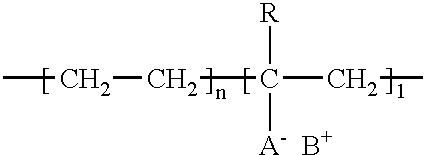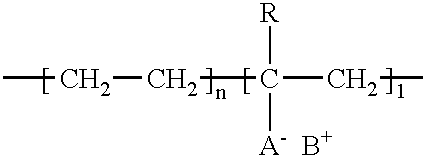Base materials for a clear protective overcoat on inkjet images
a technology of clear protective overcoat and inkjet image, which is applied in the direction of inking apparatus, printing mechanisms, instruments, etc., can solve the problems of brittle coatings with relatively poor flexibility, dramatic increase of melt viscosity, and low abrasion resistan
- Summary
- Abstract
- Description
- Claims
- Application Information
AI Technical Summary
Problems solved by technology
Method used
Image
Examples
example 1
A powder form of ethylene-methacrylic acid / salt copolymer, a thermoplastic ionomer, was used as clear toner. The clearcoat particles were properly charged within an electrostatic developer and then electrostatically projected upon inkjet printed image. The mass level of the projected clearcoat particles was sufficient to provide the necessary overcoat thickness. The overcoating powder layer was then fused using a heated roller (.about.120-140.degree. C.).
The resulting clear overcoat layer (.about.1.0-3.0 mil) was tough, very flexible and scratch resistant. It was of high clarity and gloss (.about.70-80%). The overcoat thus obtained was resistant to water and organic solvents at ambient temperature.
PUM
| Property | Measurement | Unit |
|---|---|---|
| Composition | aaaaa | aaaaa |
| Polarity | aaaaa | aaaaa |
| Color | aaaaa | aaaaa |
Abstract
Description
Claims
Application Information
 Login to View More
Login to View More - R&D
- Intellectual Property
- Life Sciences
- Materials
- Tech Scout
- Unparalleled Data Quality
- Higher Quality Content
- 60% Fewer Hallucinations
Browse by: Latest US Patents, China's latest patents, Technical Efficacy Thesaurus, Application Domain, Technology Topic, Popular Technical Reports.
© 2025 PatSnap. All rights reserved.Legal|Privacy policy|Modern Slavery Act Transparency Statement|Sitemap|About US| Contact US: help@patsnap.com



